A great idea lost under the weight of tiresome game mechanics.
When I was small, my Dad would read to me before bed. One night I asked if he would re-read The Lion, The Witch and The Wardrobe only to be told he’d had enough of ‘Jesus Lion.’ Instead, he brought out a book with a dragon raging above a burning town on its cover. It was called The Hobbit. I was easily enchanted with Bilbo’s journey – talking eagles, riddles in the dark, Smaug – and, best of all, there was more.
The Fellowship of The Ring came along and planted its signature sense of adventure, as Middle Earth’s horizons broadened. I laughed alongside Tom Bombadil. I was relieved when the hobbits escaped the Barrow-downs. I was terrified when, during a combined thunderstorm powercut, my Dad finished our current adventure at Weatherstop with ‘he felt a pain like a dart of poisoned ice pierce his left shoulder.’ I was five, and thought Frodo was dead.
Anyway, despite quite possibly being the root cause of my nearly lifelong insomnia, I adore Tolkien’s work. Without his words I wouldn’t have my love for literature and for writing. And here comes Tales of the Shire. Hobbits? Definitely like those. Life simulator with farming elements? Yes on both accounts. How would it all turn out though, well. Put it this way: when I was originally piecing this review together in my head, this paragraph was going to end with a Tolkien’s legendarium-themed simile. Something like, ‘It’s as disastrous as the fall of Gondalin’ or ‘as magnificent as the caverns of Aglarand.’ Yet, my heart won’t allow me. Tales of the Shire is just far too tedious to justify it.
Everything felt promising when I first arrived in Bywater. Gandalf made his cameo precisely when he meant to, the character creator felt bare-boned, though with growth potential and, even if it didn’t, I now had my very own hobbit hole. Sure it wasn’t the best kept smial, but that made it perfect for renovation. Time to embody my inner hobbit! Sadly, as the hours progressed, Tales revealed that while it had many of the life classic simulator elements, none have the required substance to make them particularly fun.
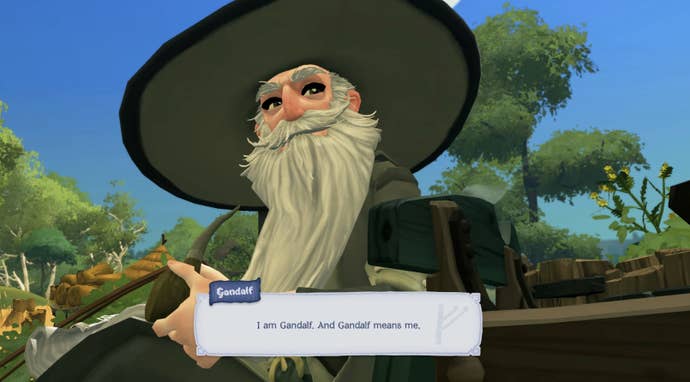
It all started going wrong with gardening. Having played my fair share of farming simulators, I wasn’t expecting any super complex mechanics outside of ‘remember to water your plants and feed your animals.’ While Tales follows this traditional loop, it does attempt to add depth by giving each seed a space requirement. Since you have to purchase additional plant pots, this means you need to carefully consider each seed’s placement if you want your garden to blossom. Alongside this, there’s Companion Planting where crops can have their star rating increased if they share a pot with a plant they like. Combined together, these should create a fun farming system where you plan out the garden to maximise each seed’s potential. So what’s the problem?
Well, Tales undermines itself by allowing crops to grow out of season. In fairness, plants grow at a slower rate when this overlap occurs, and you can’t plant out-of-season seeds. But it still removes a time-management aspect crucial to farming mechanics: the pressure of a season’s last days. Will this crop be fully grown before the weather changes? Should I stick to seeds which take three days or risk one that takes five? How will this decision affect me next season? Banishing these worries may sound useful, but, in truth, they destroyed any incentive I had for planning out my garden. After all, what’s the point in checking a seed’s growth cycle when I already know it will survive summer eroding into autumn? Why lose myself in the immersion of crafting a seasonal vegetable garden when there’s no consequences for a mistake? Even farming needs to have stakes. It’s a shame, too, because gardening is closely tied to Tales of the Shire’s core mechanic – cooking.

Unsurprisingly for a game about hobbits, you’ll be doing a lot of cooking. In fact, it’s what you’ll spend most of your time doing, for the quickest way into a hobbit’s good graces is with a good meal. (Though we’ll get to that in a moment.) Like with gardening, there’s been an attempt to give cooking some depth. Rather than simply tossing the ingredients in a bowl to receive a full plated meal (wish this was possible in real life), the goal is to move a disk into a little golden square sitting somewhere between four ratings – smooth, chunky, crisp and tender. You can also change an ingredient’s flavour by adding seasonings. Do this enough times and you could change the overall flavour of a meal.
At the beginning of my hobbit existence, I only had the ability to tenderise some ingredients and control its level of smoothness by chopping away with my knife. But even as I unlocked more tools for my kitchen, I was never free of how trial-and-error the whole process felt. There’s no way to tell how close the meal is getting to the gold square while conducting a cooking activity and sometimes you can’t even tell if it’s moved at all. Thanks to this, cooking boils down to doing the actions for a random amount of time while praying to the Valor it will yield a positive result.

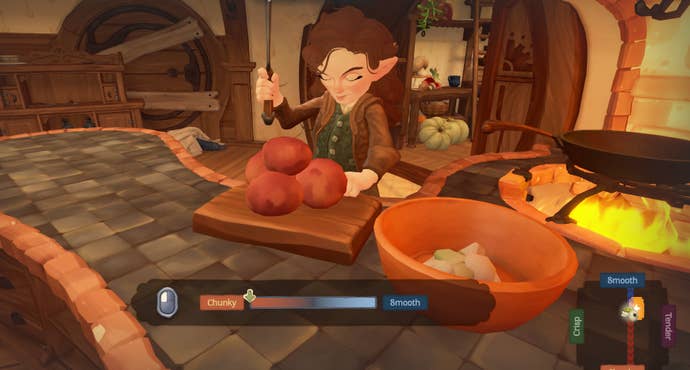

Matters aren’t helped by how, throughout my play time, Tales never gave me the opportunity to go off-recipe book. It’s odd there’s barely any chance for culinary experimentation in a game where cooking is so central it’s often required for progressing the story. Instead of uncovering a recipe through your own wits, it’s all down to befriending everyone in Bywater. Yet, the real knife in the dark with cooking is how it’s essential to the most monotonously important task in Tales of the Shire.
Shared Meals are when you sit down with fellow hobbits to increase their Friendship Levels by serving a meal, or one with a flavour, they’re craving. But don’t get excited.
Dialogue? No. Fun interactions? No. The same cutscene over and over again with the only differentiation being the venue and whether a hobbit likes the meal? Yes. Skippable? Thankfully also yes.
I can not understate how quickly I got fed up with having to do Shared Meals. The loop of ‘send invite, wait till next day, check post to see what taste they want, cook, go to venue, interact with table, place meal in front of hobbit, wordless cutscene’ turned my brain to sludge. Even though you can unlock other venues for these meals, I eventually kept hosting them in my hobbit hole simply for the sake of convenience. Get the meal out of the way, get on with my day.
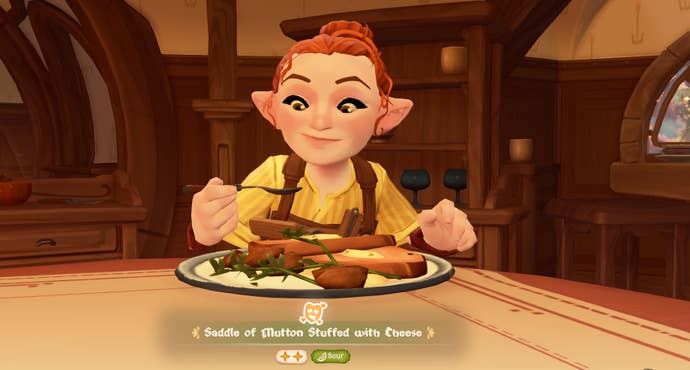
Unfortunately Shared Meals are the only way to solidly progress any Friendship Level, which are what many of the additional features are locked behind – from hobbit hole expansion to chickens. Worse still, you can barely take a break from hosting them as characters can become disgruntled if the period between their meals grows too long, peer-pressuring you into feeding them via the local postman. Though I was tempted to leave some hobbits to their grumbling, disgruntled hobbits refuse meal invites. An act that can become troublesome if they need to attend one to progress the story.
The endless train of Shared Meals might have been bearable if the Bywater residents weren’t as bland as the white walls of my rented studio flat. Alas, let me describe some of them for you:
Sandyman is grumpy and dislikes Farmer Cotton. Nefi is a dwarf. Farmer Cotton is nice, dislikes Sandyman and has a head I find uncomfortably smooth. Rosie Cotton eventually marries Samwise Gamgee, so we should all be very excited about her being here.


Even the little cutscenes offering insight into Bywater life, hidden about the map, refuse to develop the characters beyond the simple traits they’ve been given. Rarely do they portray anything other than happiness or optimism either. Not to be a Sandyman, but it did border on the nauseating at times. The main cast’s shallowness is further intensified by the mass of silent NPCs infesting Bywater. The lucky ones get to wander quietly down countryside paths, the unlock stand motionless in their gardens from dawn to midnight. Eyes staring mindlessly into the distance, only a rare box suggesting life. The sheer number of these non-talkers meant I abandoned my long-standing farming simulator tradition of meeting every character before progressing properly, because I simply couldn’t tell who was an actual functioning character and who wasn’t. I gave in and just waited for anyone I’d missed to appear in a story cutscene. It’s a disappointing result in a game where one of the main attractions is literally befriending hobbits. Though, having met them, I don’t foresee any budding friendships on the horizon anyway.

Thankfully there’s other things to do besides talking to hobbits. Foraging for one. Even if it amounts to running about the map, collecting any vegetation you spot and, most likely, selling it. You can also go fishing – and I will give Tales credit for not copying Stardew Valley’s fishing mechanics like so many other farming sims over the past years. Though that doesn’t mean it’s unique; all you do is pull the line in the opposite direction to the one the fish is swimming in.
My favourite part of Tales of the Shire – and its stand out feature – is decorating the hobbit hole. Not only do you have a wide range of furniture and decorations to collect, but you can alter nearly every part of the smial’s structure. The ceilings, floorboards, front door and even the inner archways all have their own set of customisationable options. You’re free to alter the interconnecting hallways between the main rooms no matter how small they are. Best of all this customisation works fluidly, allowing you to easily select which furnishings you want to move or structure you wish to change. The dedication put into the decorating mechanics is a clear display and, honestly, it could be a whole game in itself.
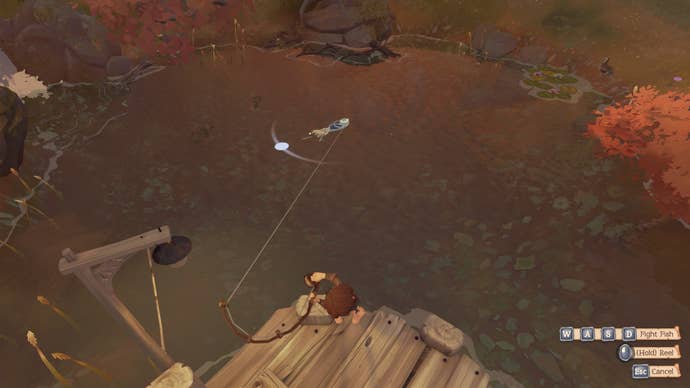

An unexpected party guest to Tales are the bugs and it’s definitely uninvited plus-one, a strange kind of lag. I’ve experienced scenery clipping, random text boxes appearing above my avatar and occasional graphics stuttering. None of this, however, was as frustrating as the two progression bugs I encountered: one causing a quest item to not appear, another occurring after a story required Shared Meal where I was met by a blank screen. Both of these were fixed by repeatedly closing and opening the game until it decided to allow me to proceed. Each time I closed the game there was a moment when my eyes met themselves in the void of my monitor. ‘What are you doing?’ the reflection asked,’ you could be doing anything else in the world.’ Solemnly, I always responded by booting up the game. Now I don’t like to presume, but I don’t think that’s the reaction the developers wanted me to have.
What could have been Tales’ saving grace is the Shire itself. If the developers could recreate the mixture of idealistic countryside and the fantastical, which makes the Shire so vivid on Tolkien’s pages, then maybe it’s almost there. The architecture, taking inspiration from Peter Jackson’s films, does capture the atmosphere of a British fairytale. I love how the wooden dragon outside of the Green Dragon almost loops completely around the pub, as if it’s about to come alive and wrap the building in its tail. Yet much of the landscape has a flatness to it. A lack of texture in both the colours and the plants they were meant to breathe life into. I was left feeling like I was exploring a world born from a half-finished picture book, rather than a grand fantasy.

What truly inches my brain is that Tales’ Bywater is not geographically accurate. (Surprise! This is where I go full Middle Earth lore-goblin, and yes, this is why I agreed to write the review.) As you can see in the first map sketch of the Shire, Bywater sits on the southern side of The Water on the shore of Bywater Pool. This map would later be recreated by Christoper Tolkien where Bywater’s location remains unchanged. Notice something? That’s right! Unlike in Tales of the Shire, there aren’t any rivers joining The Water to the east of Bywater. Geographical mistake. Sure I understand the inclusion of the river to diversify the landscape and include more fishing spots, but this is the hill I’ve built for myself to die on. (Also the mill is in the wrong location.)
(Second also – by my reckoning this game takes place some time between 2994 to 2999 in the Third Age, if we’re to assume Rosie Cotton is between 10 to 15 years old. This means the scouring of the Shire is roughly 20 years away. I couldn’t shake the thought that all my hard work would eventually go to ruin at the hands of a certain wizard. Silly I know.)
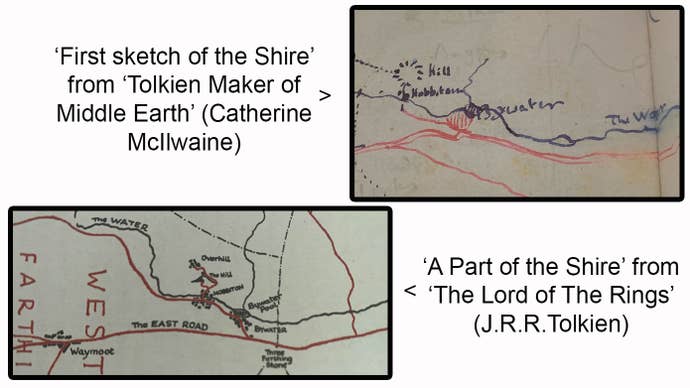
Tales of the Shire is a story about lost potential. A sad one too because ‘Shire farming simulator’ is surely the very best non-combat concept that could work for a Middle Earth game. (Pippa Funnel’s Rohan Ranch Rescue is, tragically, still just a dream.) Aside from the hobbit hole customisation, Tales succeeds at adding a dollop of tedium to every aspect of its gameplay. I came in with Middle Earth and farming sim fan bias set to high, hoping for a relaxing Shire retreat. What I got was a wearisome country hike and a renewed desire to revisit the Shire of Lord of the Rings Online – the best Tolkien-inspired game in my opinion. Maybe one day someone will make a great hobbit life simulator. I do believe it’s possible. But for now Tales of the Shire is fated to become a shadow of the past.
A copy of Tales of the Shire was provided for review by Private Division.







